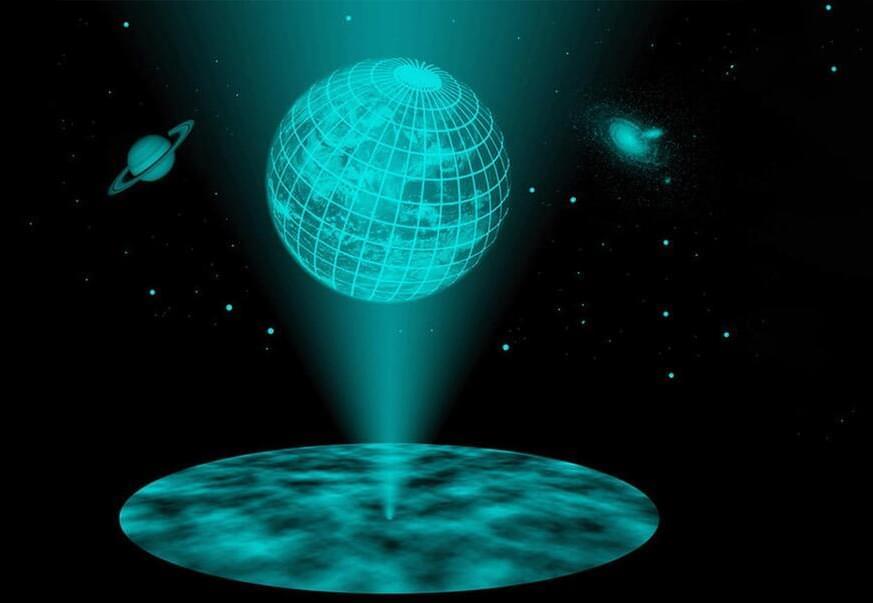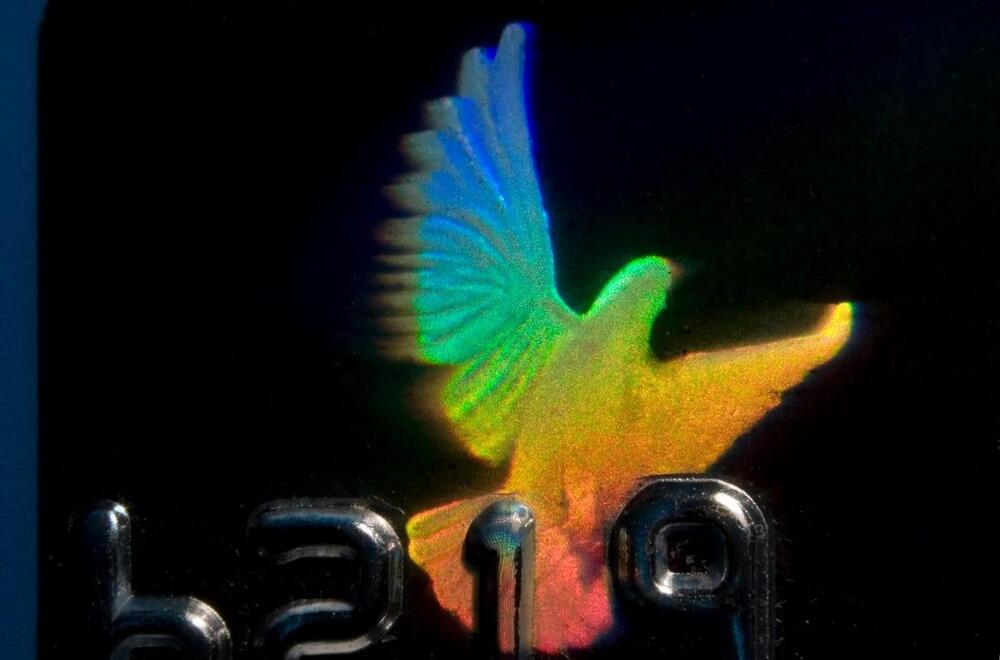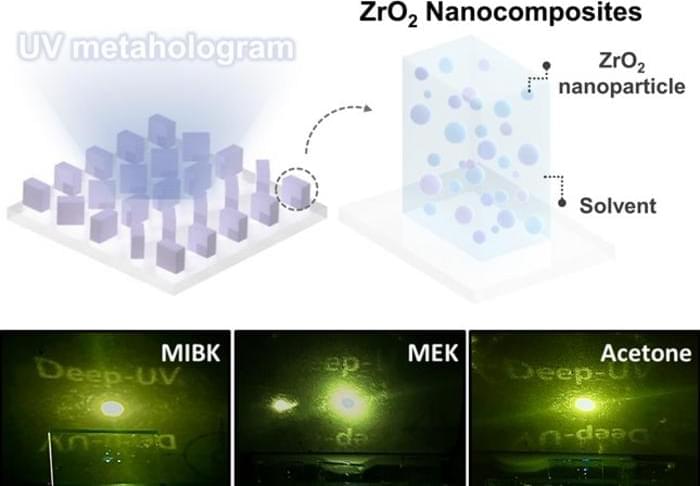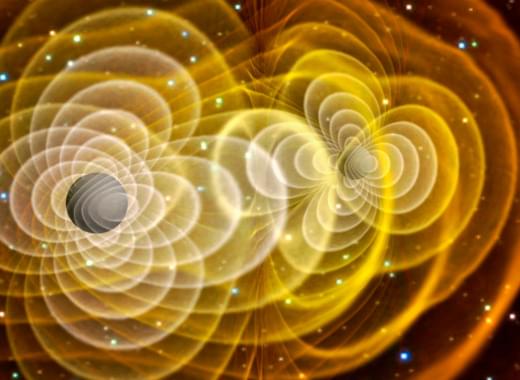Archive for the ‘holograms’ category: Page 2
Jul 31, 2024
Proto Hologram featured on NBC’s WFMJ Channel 21 with Howie Mandel and David Nussbaum
Posted by Jose Ruben Rodriguez Fuentes in categories: holograms, media & arts
Jun 2, 2024
“Metaholograms” — Scientists Have Developed a New, Better Type of Hologram
Posted by Dan Breeden in categories: augmented reality, computing, encryption, holograms, virtual reality
New “metaholograms” could transform AR/VR technologies by enabling crosstalk-free, high-fidelity image projection with vastly increased information capacity.
Researchers have developed a new type of holograms, known as “metaholograms,” capable of projecting multiple high-fidelity images free of crosstalk. This innovation opens doors to advanced applications in virtual and augmented reality (AR/VR) displays, data storage, and image encryption.
Metaholograms offer several advantages over traditional holograms, including broader operational bandwidth, higher imaging resolution, wider viewing angle, and more compact size. However, a major challenge for metaholograms has been their limited information capacity which only allows them to project a few independent images. Existing methods typically can provide a small number of display channels and often suffer from inter-channel crosstalk during image projections.
May 30, 2024
‘Metaholograms’: Researchers develop a new type of hologram
Posted by Saúl Morales Rodriguéz in categories: augmented reality, encryption, holograms, security, virtual reality
This innovation has the potential to significantly improve AR/VR displays by enabling the projection of more complex and realistic scenes. It also holds promise for applications in image encryption, where the information is encoded into multiple holographic channels for enhanced security.
The research is a significant step forward in developing high-performance metaholograms with a vastly increased information capacity. This study paves the way for exciting new possibilities in various fields, from advanced displays to information encryption and information storage.
May 15, 2024
“The universe is a hologram,” Stephen Hawking’s closest collaborator explains his final theory
Posted by Dan Breeden in categories: alien life, holograms, quantum physics
Close friend and coworker Thomas Hertog explores the groundbreaking physicist’s theories regarding the Big Bang’s beginnings on this, the sixth anniversary of Stephen Hawking’s passing.
I was appointed as Stephen Hawking’s PhD student in 1998 “to work on a quantum theory of the Big Bang.” Over the course of about 20 years, what began as a doctoral project evolved into a close collaboration that came to an end only six years ago, on March 14, 2018, when he passed away.
The mystery that drove our investigation during this time was how the Big Bang could have produced conditions that were so ideal for life. How should we interpret this enigmatic display of intent?
May 14, 2024
Stanford’s AI-hologram tech enables 3D viewing with regular glasses
Posted by Gemechu Taye in categories: holograms, robotics/AI
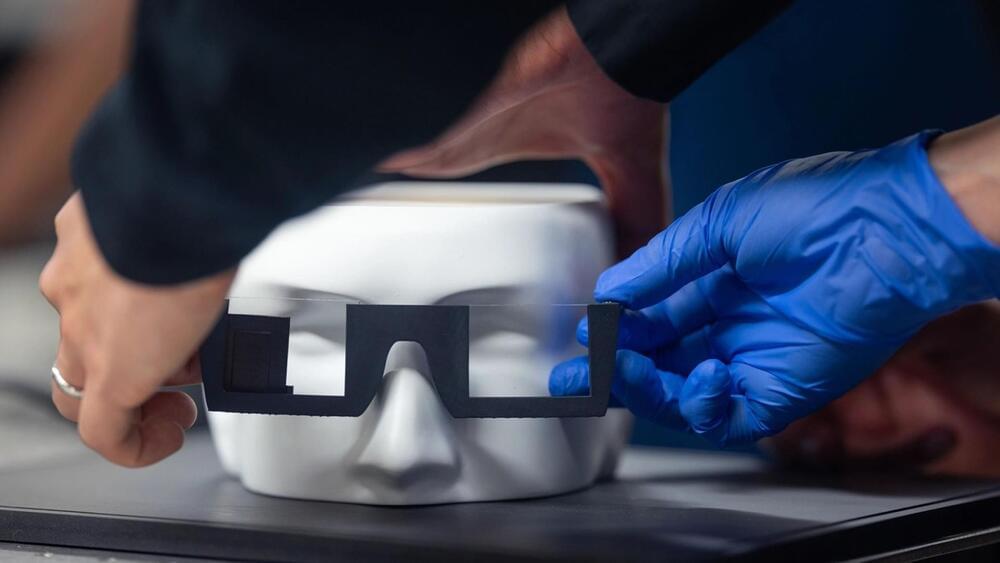
Engineers at Stanford University have successfully combined AI and holographic imagery to develop the augmented reality headset of the future.
May 12, 2024
Man who married a hologram can no longer communicate with his virtual wife after 3 years together
Posted by Shubham Ghosh Roy in category: holograms
A man who married a hologram of his favourite fictional character has found himself no longer able to communicate with his virtual wife.
May 11, 2024
The big idea that our Universe is a hologram
Posted by Dan Breeden in category: holograms
Holograms preserve all of an object’s 3D information, but on a 2D surface. Could the holographic Universe idea lead us to higher dimensions?
May 11, 2024
Discovering optimal conditions for mass production of ultraviolet holograms
Posted by Dan Breeden in categories: chemistry, engineering, holograms
Professor Junsuk Rho from the Department of Mechanical Engineering, Chemical Engineering, and Electrical Engineering, Hyunjung Kang and Nara Jeon, PhD candidates, from Department of Mechanical Engineering and Dongkyo Oh, a PhD student, from the Department of Mechanical Engineering at Pohang University of Science and Technology (POSTECH) successfully conducted a thorough quantitative analysis. Their aim is to determine the ideal printing material for crafting ultraviolet metasurfaces.
Their findings featured in the journal Microsystems & Nanoengineering (“Tailoring high-refractive-index nanocomposites for manufacturing of ultraviolet metasurfaces”).
Diagram illustrating the composition of nanocomposites for ultraviolet metasurface fabrication. (Top) Diagram illustrating the ZrO 2 nanocomposite’s role in achieving high transfer fidelity ultraviolet metaholograms. (Bottom) Comparison of UV holograms under various solvent conditions. (Image: POSTECH)
Apr 22, 2024
Gravity Wave Signals are being Analyzed to Detect Gravitational Memory Effect
Posted by Shailesh Prasad in categories: holograms, quantum physics, space
An Ongoing Meta-analysis of Gravitational Wave Signals may soon Prove that Space Remembers: permanent memory imprints in spacetime may soon be detected, which will be a validation of Nassim Haramein and our research team’s prediction that space has the property of memory, in which we described how the informational imprint of memory in space is what holographically generates time—that is to say that 4D spacetime is a hologram of a 3D voxel information network—as well as ordering properties underlying dynamics of organized matter. The gravitational wave memory effect is a prediction of general relativity, and physicists have devised a test of this interesting spacememory effect via a meta-analysis of gravitational wave detector data. The presence of memory effects in gravitational wave signals not only provides the chance to test an important aspect of general relativity, but also represents a potentially non-negligible contribution to the waveform for certain gravitational wave events. As well, memory properties of space will have far-reaching implications, from probing theories of quantum gravity and unified physics to potential applications in telecommunications technologies.




